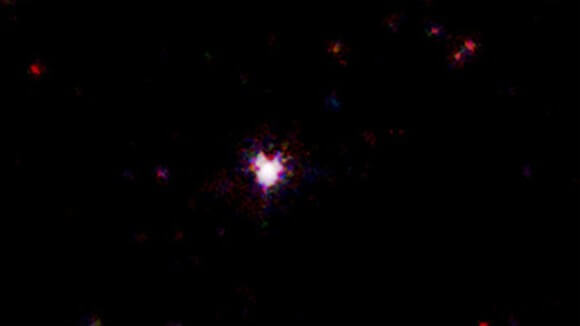A team led by researchers from the University of Warwick have discovered a new type of powerful and persistent cosmic explosion, and have developed a theory that it originates from the particularly violent death of a giant star.

These bursts create huge, high-energy pulses known as gamma-ray bursts. But while most of these outbreaks pass within minutes, the new type can last for several hours.
The first example of this type of eruption was discovered by astronomers in December 2010, but they lacked distance measurements so the mystery made it impossible to distinguish between several theories concerning the case.
The first theory suggests that it is an asteroid that was torn to pieces by a neutron star in our galaxy. The second theory - it is a supernova in a galaxy 3.5 billion light years away, or in popular language, it is a redshift of 0.33. A new study by a team of scientists led by Dr. Andrew Laban at the University of Warwick has discovered several more examples of such giant eruptions. They showed that the 2010 event also took place in a much more distant galaxy than suggested by both theories.
The research was presented April 16 at a symposium in Nashville, Tennessee.
The researchers, who examined data from the Gemini Observatory in Hawaii, calculated that long bursts of gamma rays have a redshift of 0.847. This means that they are halfway to the edge of the observable universe or about 7 billion light years from us. Based on this location, Dr. Laban and his team developed a new theory to explain how they occur.
According to their proposal, this type of eruptions is created by the explosion of supergiant stars, which are 20 times larger than the Sun and are among the largest and brightest stars in the universe. Their radius reaches a billion kilometers and more or a thousand times that of the Sun.
They say that the long duration of the 2010 eruption and two similar events indicates that it is a giant that explodes as a supernova.
Most of the stars that produce a gamma-ray burst are small but compact stars, and the burst that destroys them penetrates through the star in seconds. In the case of continuous burst events, the explosion takes longer to fragment the star and therefore the gamma ray burst takes longer.
Says Dr. Laban: "These events are among the largest explosions in nature, but we are just beginning to discover them. They show us that the universe is much more violent and changing than we thought."
"Previously we discovered many short-lived gamma ray burst events, but in recent years we have begun to see the whole picture."
Niall Tanbir, a professor at the University of Leicester and the second co-author of the paper added: "We believe that what drives the eruption is a black hole that has just formed in the heart of the star."
"Predicting the detailed behavior of matter falling into a black hole under these conditions is a difficult task, and from the theoretical point of view we did not initially expect an explosion to occur at all. The amazing thing is that nature seems to have found a solution to the explosion of a wide range of stars in the most dramatic and violent way possible."
The most common types of gamma-ray bursts are caused when a Wolf Ray star is in the final stages of its evolution and collapses into a black hole in our nucleus. The remaining material is drawn into the black hole, but some of the energy escapes and is focused into a jet of material that blasts out in two directions, creating a pair of gamma rays in the process.
These jets are ejected relatively quickly (almost at the speed of light) otherwise the matter will fall back into the black hole, from which it will not be able to escape. For this reason they last only a few seconds. However, a gamma ray burst in a larger star receives energy from a larger pool of material and therefore the duration of the burst is also greater.
For the news in Universe Today
